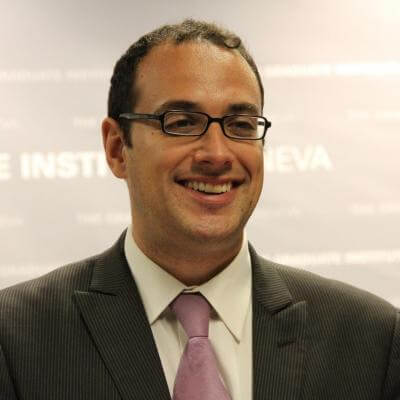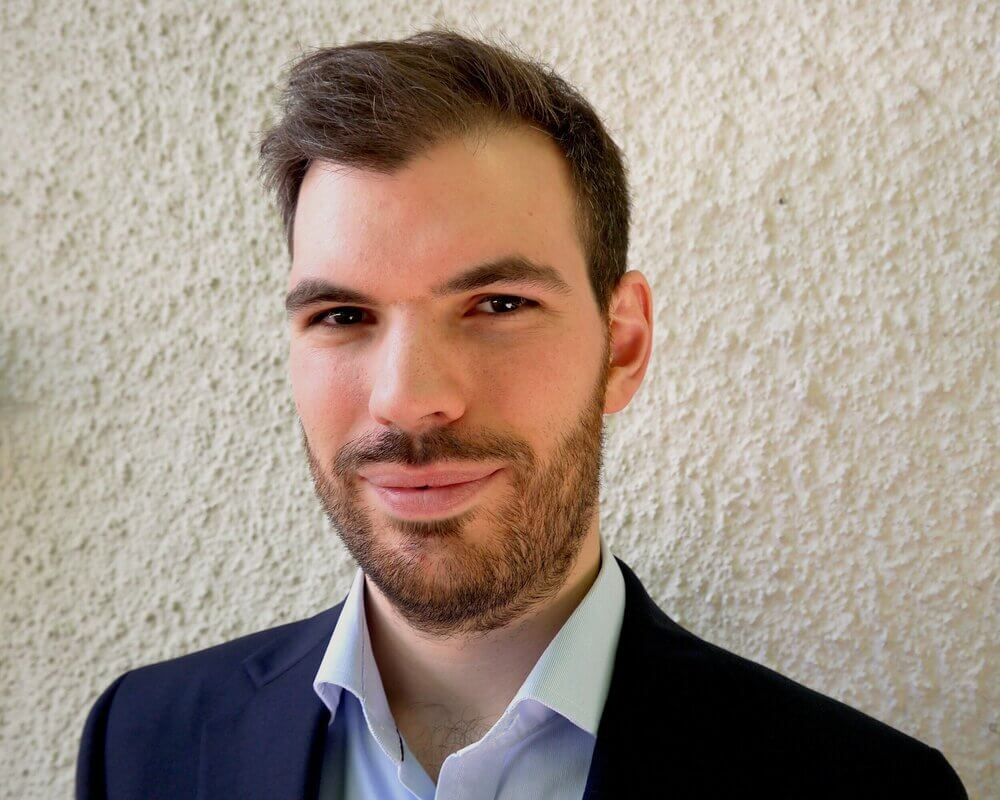The Politics of International Legal Justifications: On Truth, Lies and Bullshit
“Never has there been so much lying as in our day. Never has lying been so shameless, so systematic, so unceasing.” These words could easily be mistaken for another lamentation about the age of post-truth politics in which we are supposed to live. It may come as a surprise that they were written in 1943 by Alexandre Koyré in a reflection about political lies. The concept of “post-truth” and its inherent assumption that during the “pre-post-truth” era politicians were truthful may thus well oversimplify the complex relationship between politics and truth.

Presumably, Hannah Arendt was closer to the truth when pointing out that “no one has ever doubted that truth and politics are on rather bad terms with each other, and no one . . . has ever counted truthfulness among the political virtues”. What may be new in our age is the proliferation of political bullshit. As theorised by philosopher Harry Frankfurt, the hallmark of bullshit and what distinguishes it from a mere lie is its “lack of connection to a concern with truth”. A liar has an eye on the truth and “designs his falsehood under the guidance of that truth”: it is hard to produce an effective lie without any concern with plausibility, and little plausibility can be secured when one takes patently obvious liberty with truth. In contrast, the bullshitter is “neither on the side of the true nor on the side of the false”, being prepared to make any assertion “without paying attention to anything except what it suits [him] to say”. The distinction may appear overly subtle but it is an important one. As Frankfurt explains: “Someone who lies and someone who tells the truth are playing on opposing sides, so to speak, in the same game. Each responds to the facts as he understands them, although the response of the one is guided by the authority of the truth while the response of the other defies that authority and refuses to meet its demands. As theorised by philosopher Harry Frankfurt, the hallmark of bullshit and what distinguishes it from a mere lie is its “lack of connection to a concern with truth”. The bullshitter ignores these demands altogether. He does not reject the authority of the truth, as the liar does, and oppose himself to it. He pays no attention to it at all.”
Frankfurt’s reasoning may appear far afield from international law, but I submit that it is crucial to a proper understanding of the politics of legal justifications for state behaviour. It is a fact that states almost invariably take the trouble to provide legal justifications for their conduct in international affairs. This is so even in circumstances where their conduct constitutes an egregious breach of international law. Saddam Hussein justified the invasion of Kuwait by reference to international law, and so did Vladimir Putin in the context of the recent invasion of Ukraine. Does the fact that international law was mobilised by Saddam Hussein or Vladimir Putin in those instances mean that it played a meaningful role in their respective decisions?

The answer is that only plausible justifications should be seen as relevant to the game of international law because only such justifications can reasonably be intended and count as moves in that game. It is hard to see how international law can influence state behaviour if all it takes for a state to claim compliance with international law is to put forward any justification no matter its plausibility. By contrast, if only plausible justifications count, the fact that international law is not indefinitely malleable and that for that reason, “plausible justifications are often unavailable or limited” (Louis Henkin) is likely to have an impact on the behaviour of a state that is unwilling to face public shame and ridicule associated with implausible justifications. I submit that Saddam Hussein’s and Putin’s justifications are situated vis-à-vis international law exactly how bullshit is situated vis-à-vis the truth: they are not on either side of the game of international law.
What the game of international law entails, however, is not exhausted by its rules. An analogy with Foucault’s understanding of the functioning of “truth regimes” could be useful here. Foucault invites us to consider the following reasoning: “If it is true, then I will submit; it is true, therefore I submit; it is true, therefore I am bound.” As Foucault highlights, the “therefore” that links the two parts of such assertions is not logical, it is not something arising out of truth itself, but is a historical-cultural phenomenon. In other words, the constraining power of truth can never be a function of truth alone.The constraining power of truth can never be a function of truth alone. When someone challenges what we commonly take to be a solidly established truth, it would be difficult to seriously engage in a rational argument with such a sceptic, whether the latter has genuine doubts or is engaged in manipulation. This is the case not because we would not be able to provide evidence, but because it would be difficult to see what would count as evidence for that person, causing them to accept the force of the truth at issue.
 According to the Washington Post, President Trump made 30,573 false or misleading claims while in office. Their interactive webpage breaks these claims down by topic, source and date.
According to the Washington Post, President Trump made 30,573 false or misleading claims while in office. Their interactive webpage breaks these claims down by topic, source and date.International law’s constraining power is no differently situated than the constraining power of truth: it is not located in international law itself, but in the socio-cultural environment its actors are embedded in – actors who genuinely believe in international law, feel obligated to justify their conduct by reference to international legal rules or offer plausible justifications when they seem to deviate from them. They perceive the inability to comply with such protocols as an unenviable position because their reputation can be adversely affected by breaches of socially important practices. If “bullshit is a greater enemy of the truth than lies are” (Frankfurt), political leaders such as Vladimir Putin for whom “the old powers of shame” (J.M. Coetzee) seem completely inoperative are then the greatest enemies of international law.
PODCAST: The Right of Freedom in Armed Conflicts: A View from the United Nations, with Paige Morrow
RO Geneva Graduate Institute.
PODCAST: The link between political message and social context, with Michelle Weitzel
RO, Geneva Graduate Institute
DEFINITIONS | Some terms in the world of disinformation
An unfair practice of propaganda and manipulation used in the media and particularly on the internet, consisting of giving the impression of a mass phenomenon that emerges spontaneously when in reality it has been created from scratch to influence public opinion. (Source: Wiktionnaire, s.v. “astroturfing”.)
Computational propaganda involves the “use of algorithms, automation, and human curation to purposefully distribute misleading information over social media networks” (Woolley & Howard 2018). While propaganda has existed throughout human history, the rise of digital technologies and social media platforms have brought new dimensions to this practice (Source: Programme on Democracy & Technology of the Oxford Internet Institute, “What Is Computational Propaganda?”.)
A conspiracy theory is an explanation for an event or situation that asserts the existence of a conspiracy by powerful and sinister groups, often political in motivation, when other explanations are more probable. The term generally has a negative connotation, implying that the appeal of a conspiracy theory is based in prejudice, emotional conviction, or insufficient evidence. A conspiracy theory is distinct from a conspiracy; it refers to a hypothesised conspiracy with specific characteristics, including, but not limited to, opposition to the mainstream consensus among those who are qualified to evaluate its accuracy, such as scientists or historians. (Source: Wikipedia, “Conspiracy Theory”.)
Black propaganda is intended to create the impression that it comes from those it is supposed to discredit. Black propaganda contrasts with grey propaganda, which does not identify its source, as well as white propaganda, which does not disguise its origins at all. It is typically used to vilify or embarrass the enemy through misrepresentation. The major characteristic of black propaganda is that the audience are not aware that someone is influencing them, and do not feel that they are being pushed in a certain direction. This type of propaganda is associated with covert psychological operations. Black propaganda is the “big lie”, including all types of creative deceit. Black propaganda relies on the willingness of the receiver to accept the credibility of the source. (Wikipedia, “Black Propaganda”.)
Disinformation is false information deliberately spread to deceive people. It is sometimes confused with misinformation, which is false information but not deliberately so. Disinformation is presented in the form of fake news. Disinformation comes from the application of the Latin prefix dis- to information, to create the meaning “reversal or removal of information”. Disinformation attacks involve the intentional dissemination of false information, with an end goal of misleading, confusing, or manipulating an audience. They may be executed by political, economic or individual actors to influence state or non-state entities and domestic or foreign populations. These attacks are commonly employed to reshape attitudes and beliefs, drive a particular agenda, or elicit certain actions from a target audience. Tactics include the presentation of incorrect or misleading information, the creation of uncertainty, and the undermining of both correct information and the credibility of information sources. (Sources: Wikipedia, “Disinformation” and “Disinformation Attack”.)
Fake news
Fake news is false or misleading information presented as news. Fake news often has the aim of damaging the reputation of a person or entity, or making money through advertising revenue. Although false news has always been spread throughout history, the term fake news was first used in the 1890s when sensational reports in newspapers were common. Nevertheless, the term does not have a fixed definition and has been applied broadly to any type of false information. It has is also been used by high-profile people to apply to any news unfavourable to them. In some definitions, fake news includes satirical articles misinterpreted as genuine, and articles that employ sensationalist or clickbait headlines that are not supported in the text. Because of this diversity of types of false news, researchers are beginning to favour information disorder as a more neutral and informative term. (Source: Wikipedia, “Fake News”.)
IMT is a theory of deceptive discourse production, arguing that, rather than communicators producing “truths” and “lies”, the vast majority of everyday deceptive discourse involves complicated combinations of elements that fall somewhere in between these polar opposites; with the most common form of deception being the editing-out of contextually problematic information (i.e., messages commonly known as “white lies”). More specifically, individuals have available to them four different ways of misleading others: playing with the amount of relevant information that is shared, including false information, presenting irrelevant information, and/or presenting information in an overly vague fashion. (Source: Wikipedia, “Information Manipulation Theory”.)
Misinformation is incorrect or misleading information. It differs from disinformation, which is deliberately deceptive. Misinformation comes from the application of the Latin prefix mis- to information, to create the meaning “wrong of false information”. Rumours, by contrast, are information not attributed to any particular source, and so are unreliable and often unverified, but can turn out to be either true or false. Even if later retracted, misinformation can continue to influence actions and memory. People may be more prone to believe misinformation if they are emotionally connected to what they are listening to or are reading (Source: Wikipedia, “Misinformation”.)
Mute news is a pernicious form of information in which a key issue that often underlies the concerns of the public and the body politic is obscured from media attention. (Source: Lê Nguyên Hoang and Sacha Altay, “Disinformation: Emergency or False Problem?”, Polytechnique Insights, 6 September 2022.)
Propaganda is communication that is primarily used to influence or persuade an audience to further an agenda, which may not be objective and may be selectively presenting facts to encourage a particular synthesis or perception, or using loaded language to produce an emotional rather than a rational response to the information that is being presented. In the 20th century, propaganda was often associated with a manipulative approach, but historically, propaganda has been a neutral descriptive term of any material that promotes certain opinions or ideologies. (Source: Wikipedia, “Propaganda”.)
Typosquatting, also called URL hijacking, a sting site or a fake URL, is a form of cybersquatting, and possibly brandjacking, which relies on mistakes such as typos made by Internet users when inputting a website address into a web browser. Should a user accidentally enter an incorrect website address, they may be led to any URL (including an alternative website owned by a cybersquatter). (Source: Wikipedia, “Typosquatting”.)
PODCAST: The Difference between Russian and Ukrainian propaganda, Svitlana Ovcharenko
Research Office. Geneva Graduate Institute.
PODCAST: (Dis)Information as a tool of warfare, with Jean-Marc Rickli
Research office. Geneva Graduate Institute
PODCAST: Mobilization from below to face the control in authoritarian states, with G. O. and V. Neeraj
Research Office. Geneva Graduate Institute.










